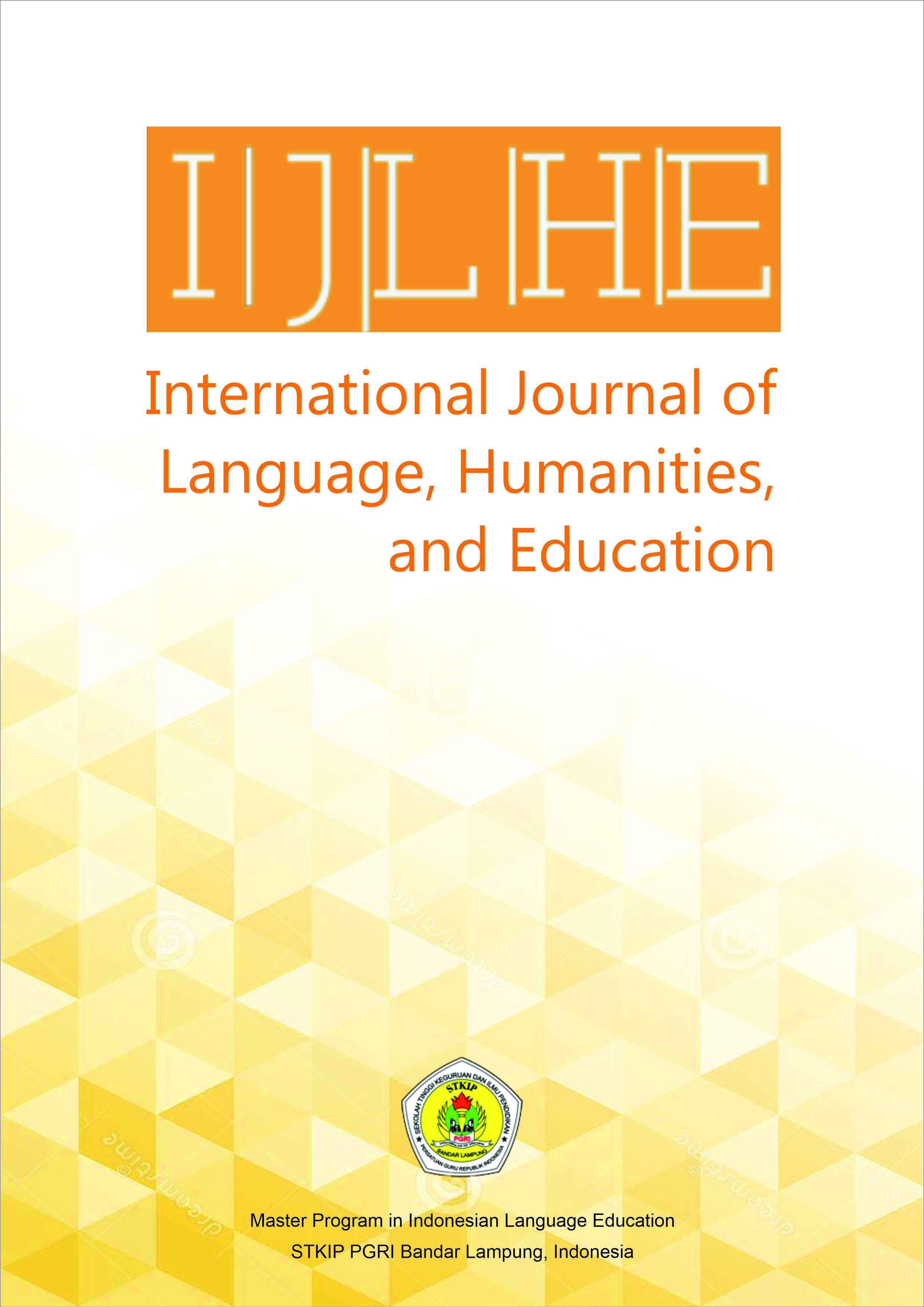A Narrative Analysis of “Angel Has Fallen” Movie
DOI:
https://doi.org/10.52217/ijlhe.v7i2.1646Keywords:
character roles, genres, movie, narrative analysisAbstract
The aim of this study is to examine the struggle of a secret service agent to clear his name of an alleged assassination he did not commit, as visualized in the movie Angel Has Fallen, using Vladimir Propp’s theory, particularly the seven spheres of action and thirty-one narrative functions. To conduct this research, the writer employed a qualitative method. During the analysis process, the writer classified the characters into the seven spheres of action and identified the sequence of events based on the thirty-one narrative functions. The results of this research revealed five spheres of action: villain, donor, helper, hero, and false hero. Additionally, ten narrative functions were identified in the movie Angel Has Fallen, including departure, pursuit, the first function of the donor, unfounded claims, beginning counteraction, villainy, guidance, struggle, victory, and exposure. The findings of this study contribute to the understanding of how narrative structures and character roles are used to convey themes of redemption and justice in action movies. The application of Propp’s theory provides a framework for analyzing the narrative complexities of modern films. This research could serve as a reference for future studies exploring the narrative structures of action or thriller genres and could also be useful for filmmakers aiming to craft compelling and structured narratives
References
Ali, A. J. K. N., & Siddiq, M. (2023). Narrative and Semiotic Analysis on Hajj and Social Issues in Mecca I’m Coming Movie. Lingua Cultura, 17(2), 209–218. https://doi.org/10.21512/lc.v17i2.10202
Azizaty, S. S., & Putri, I. P. (2018). Analisis Narasi Tzvetan Todorov pada Film Sokola Rimba. ProTVF, 2(1), 51. https://doi.org/10.24198/ptvf.v2i1.12873
Creswell, J. W., & Poth, C. N. (2018). Qualitative Inquiry and Research Design Choosing among Five Approaches. Sage Publications.
Eriyanto. (2013). Analisis Naratif: Dasar-dasar dan penerapannya dalam Analisis Teks Berita Media. Kencana Prenada Media Group.
Mafulla, A. ., Jaya, W. S., Wicaksono, A., & Hastomo, T. (2020). Interpretation of The Characteristics of The Novel Ronggeng Dukuh Paruk by Ahmad Tohari. IJLHE: International Journal of Language, 3(1), 27–36. https://doi.org/10.52217/ijlhe.v3i1.791
Merriam, S. B., & Tisdell, E. J. (2016). Qualitative Research: A Guide to Design and Implementation. Jossey Bass.
Nainggolan, B. A., Rezeki, I. S., Karlinda, B., Zulianti, H., & Hastomo, T. (2024). Analyzing Maxim Violations in the Batman Cartoon Movie. Lexeme : Journal of Linguistics and Applied Linguistics, 6(1), 21–32. https://openjournal.unpam.ac.id/index.php/LJLAL/article/view/41793
Propp, V. (1968). Morphology of the Folktale. University of Texas Press.
Wahyuni, B., Supriyono, S., Sutrisno AB, J., & Hastomo, T. (2020). Interpretation of Moral and Religious Value in Emha Ainun Najib’s Poems. IJLHE: International Journal of Language, Humanities, and Education, 3(2), 63–72. https://jurnal.stkippgribl.ac.id/index.php/ijlhe/article/view/844














